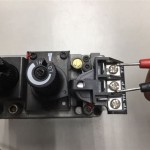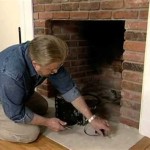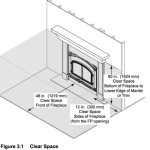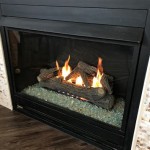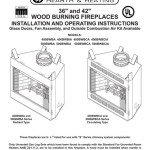Mounting a TV Above a Fireplace: Considerations and Procedures
Mounting a television above a fireplace is a popular design choice, offering a visually appealing and space-saving solution. However, this configuration presents several challenges that require careful consideration before installation. This article will explore the key factors involved in safely and effectively mounting a TV above a fireplace, outlining the necessary precautions and procedures.
Heat Exposure and Ventilation
One of the primary concerns when mounting a television above a fireplace is heat exposure. Fireplaces, whether traditional wood-burning or gas-fueled, generate significant heat that can damage the electronic components of a television. Excessive heat can lead to reduced lifespan, screen discoloration, or even complete failure of the TV. The proximity of the television to the heat source is a critical factor to assess.
The specific type of fireplace significantly impacts the amount of heat transferred upwards. Wood-burning fireplaces generally produce more heat than gas fireplaces. Furthermore, the design of the fireplace, including the presence of a mantel and the venting system, plays a crucial role in regulating heat flow. A substantial mantel can deflect a significant portion of the heat away from the television. Similarly, an efficient chimney with proper baffling will reduce the amount of heat escaping into the room and potentially affecting the TV.
Proper ventilation is essential to mitigate the risks associated with heat exposure. Adequate space should be provided between the top of the fireplace and the bottom of the television. This allows for sufficient airflow to dissipate heat and prevent it from accumulating around the TV. Consulting the television manufacturer's specifications regarding operating temperature ranges is highly recommended. If the area above the fireplace consistently exceeds these ranges, alternative mounting locations should be considered.
Furthermore, installing a heat shield can provide an additional layer of protection. A heat shield is a non-combustible barrier that deflects heat away from the television. These shields are typically made of metal and can be custom-fabricated or purchased commercially. The effectiveness of a heat shield depends on its size, material, and placement. It should be positioned to maximize heat deflection while still maintaining adequate ventilation.
Structural Considerations and Mounting Techniques
The structural integrity of the wall above the fireplace is another essential consideration. The wall must be capable of supporting the weight of the television and the mounting hardware. Different wall types, such as drywall, brick, or concrete, require different mounting techniques and hardware to ensure a secure and stable installation.
Drywall is one of the most common wall types, but it is generally not strong enough to support the weight of a television on its own. To securely mount a TV to drywall, it is necessary to locate and attach the mounting bracket to the wall studs. Wall studs are vertical wooden beams that provide structural support. Using a stud finder, one can locate the studs and mark their position on the wall. The mounting bracket should then be aligned with the studs and securely attached using appropriate screws or lag bolts.
Brick and concrete walls offer greater structural support than drywall. However, mounting a television to these surfaces requires specialized drilling and anchoring techniques. A hammer drill is necessary to create holes in the brick or concrete wall. Appropriate anchors, such as sleeve anchors or wedge anchors, should then be inserted into the holes to provide a secure attachment point for the mounting bracket. It's critical to utilize anchors rated for the combined weight of the TV and the mounting bracket to ensure safe installation.
The choice of mounting bracket is also crucial. Several types of mounting brackets are available, including flat mounts, tilting mounts, and full-motion mounts. Flat mounts position the television close to the wall, while tilting mounts allow for slight adjustments in the vertical angle. Full-motion mounts offer the greatest flexibility, allowing the television to be extended, swiveled, and tilted for optimal viewing. The selection of the appropriate mount depends on the desired viewing angle, the size and weight of the television, and the structural limitations of the wall.
Viewing Angle and Ergonomics
Mounting a television above a fireplace often results in a higher-than-optimal viewing angle. This can lead to neck strain and discomfort, particularly during extended viewing sessions. The ideal viewing angle is typically considered to be at eye level when seated. When a television is mounted too high, viewers are forced to tilt their heads upwards, which can cause muscle fatigue and pain.
The height of the fireplace and the distance between the seating area and the television should be taken into account when determining the optimal mounting height. A larger room allows for a greater viewing distance, which can partially offset the effects of a higher mounting position. However, even in larger rooms, it is advisable to lower the mounting height as much as possible without obstructing the fireplace or other architectural features.
Using a tilting mount can help to improve the viewing angle, especially when the television is mounted at a higher-than-ideal position. A tilting mount allows the television to be angled downwards, bringing the screen closer to eye level. However, the effectiveness of a tilting mount is limited, and it may not completely eliminate neck strain if the television is mounted excessively high.
Consideration should be given to the primary use of the television. If it is primarily used for casual viewing or background entertainment, a slightly higher viewing angle may be acceptable. However, if the television is used for extended viewing sessions, such as watching movies or playing video games, it is essential to prioritize ergonomic considerations and minimize the risk of neck strain. In some cases, an alternative mounting location may be a more appropriate solution to ensure optimal viewing comfort.

Can I Mount My Tv Above The Fireplace

Can I Mount My Tv Above The Fireplace

Putting A Tv Above The Fireplace May Not Be Such Bad Idea After All

Safely Mount A Tv Above An Electric Fireplace Touchstone Home S Inc

Ortal S Innovative Technology Makes It Safe To Mount A Tv Above Your Fireplace

How To Mount A Tv Over Fireplace Vertical Chimney Care

3 Alternatives To Mounting Your Television Above The Fireplace Avs

Is It Safe To Mount Your Tv Above The Fireplace Chimney And Wildlife

Should You Mount Your Tv Above A Fireplace Digital Trends
Can I Mount A Tv Over My Fireplace Heatilator
Related Posts

